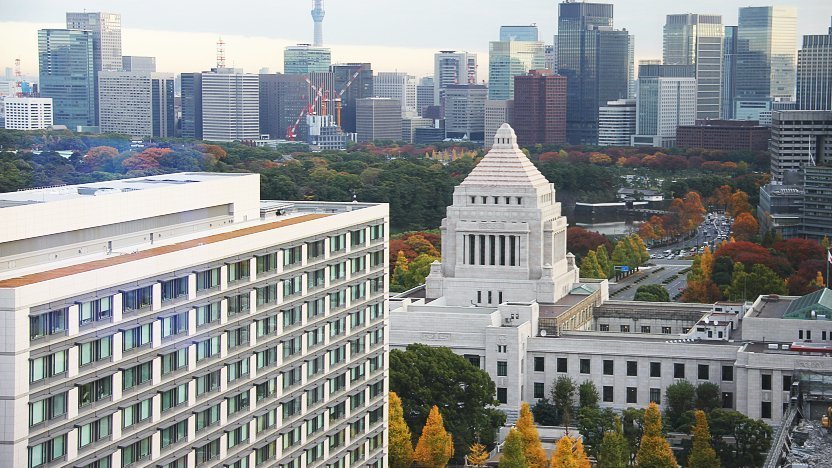Government

The current Japanese constitution was promulgated in the year 1946 during the occupation by the Allied powers:
The Emperor is the symbol of the state but does not have any effective political power.
Legislature: The Japanese parliament is called the Diet. It consists of the House of Representatives (lower house) and the House of Councillors (upper house). The members of the Diet are elected by the Japanese people.
Executive: The executive or cabinet is headed by the Prime Minister. The cabinet further consists of the ministers who are appointed by the prime minister and are usually members of the Diet. The prime minister is elected by the Diet.
Judiciary: The highest court is the Supreme Court. Other courts are district courts, high courts, family courts and summary courts. Judges are appointed by the cabinet.
Elections: The minimum voting age is 18 years. Women received the right to vote with the postwar constitution. Elections for the House of Representatives are carried out every four years, and half of the House of Councillors is elected every three years. Beside the national elections there are prefectural and municipal elections.
Defense: The constitution prohibits Japan to maintain military forces and to lead war. Despite the anti-war clause, the National Police Reserve was established in 1950 during the occupation of Japan by the Allied powers (1945-1952) as a replacement for American troops sent to the Korean War. The National Police Reserve was transformed into the Self Defense Force by the Japanese government in 1954.
Questions? Ask in our forum.
Links and Resources
English
-
The Prime Minister's Offical Residence
Official website. -
Cabinet Office
Official website. -
The House of Representatives (Shugiin)
Official website. -
The House of Councillors (Sangiin)
Official website. -
Websites of Japanese Embassies
List of Japanese embassies and consulates worldwide by the Ministry of Foreign Affairs. -
Foreign Missions in Japan
List of foreign embassies and consulates in Japan by the Ministry of Foreign Affairs.